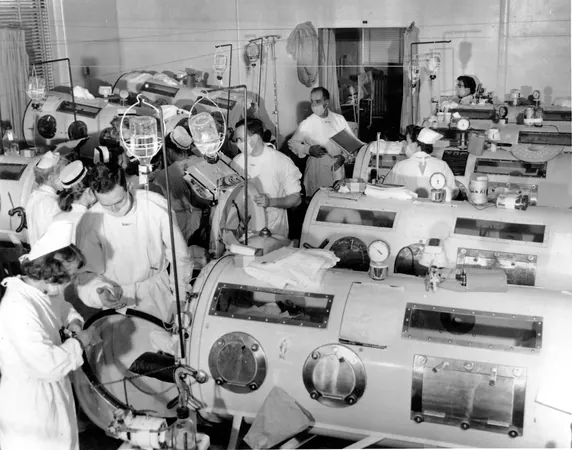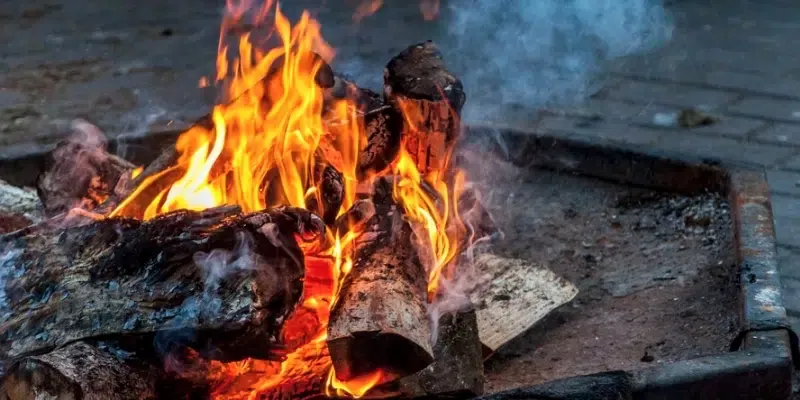
Cosmic Clash: Dark Nebula in Circinus Torn Apart by Baby Stars Reveals Secrets of Our Solar System's Origin
2025-04-28
Author: Liam
In a breathtaking spectacle within the constellation Circinus, an epic battle between darkness and light unfolds, captured brilliantly by the National Science Foundation's Dark Energy Camera.
What Lies Within the Circinus West Molecular Cloud?
Dubbed the Circinus West molecular cloud, this stark black feature at the center of a newly released image is a colossal repository of star-forming gas, located approximately 2,500 light-years from Earth. Known as a "dark nebula," its thick gas and dust prevent any light from breaking through, creating an awe-inspiring void.
A Vast and Mysterious Structure
Spanning an estimated 180 light-years—over 60 times wider than our solar system—this dark cloud harbors an extraordinary mass equivalent to that of 250,000 suns. However, in such a densely packed environment, darkness won’t reign indefinitely.
A Stellar Nursery Comes Alive
Known as an active stellar nursery, the Circinus West molecular cloud is where cold, dense gas collapses and gives birth to new stars. The image captures this vivid transformation, showcasing bright pinpricks of light. These luminous bursts signal the emergence of young stars, launching powerful jets of ionizing energy that slice through the surrounding gloom.
An Intriguing Tapestry of Light
Behind this dark cloud lies a beautiful backdrop of distant stars, glowing in a warm orange hue. The Dark Energy Camera, housed at the Cerro Tololo Inter-American Observatory in Chile, is among the most advanced digital cameras globally, providing ever more detailed glimpses of this molecular cloud.
Rare Herbig-Haro Objects Illuminate the Scene
Zooming further into the molecular cloud reveals additional captivating formations, including intriguing Herbig-Haro objects. These structures are born when fast-moving gas released by young stars collides with the surrounding slower gas, generating vibrant jets of colorful radiation that light up the cosmos.
Nature’s Laboratory for Star Formation
As these young stars unleash their radiant energy, they chisel away at the dark gas cloud, sculpting intricate tendril-like shapes. These dynamic environments serve as a "natural laboratory" for scientists, who study the intricate dance of star formation and the evolution of molecular clouds and galaxies.
Unlocking the Mysteries of the Universe
Discovering how these stellar nurseries operate not only enhances our understanding of star formation but also offers tantalizing clues about the origins of our own solar system. The ongoing cosmic drama in the Circinus West molecular cloud continues to inspire inquiry into the very nature of our existence.









 Brasil (PT)
Brasil (PT)
 Canada (EN)
Canada (EN)
 Chile (ES)
Chile (ES)
 Česko (CS)
Česko (CS)
 대한민국 (KO)
대한민국 (KO)
 España (ES)
España (ES)
 France (FR)
France (FR)
 Hong Kong (EN)
Hong Kong (EN)
 Italia (IT)
Italia (IT)
 日本 (JA)
日本 (JA)
 Magyarország (HU)
Magyarország (HU)
 Norge (NO)
Norge (NO)
 Polska (PL)
Polska (PL)
 Schweiz (DE)
Schweiz (DE)
 Singapore (EN)
Singapore (EN)
 Sverige (SV)
Sverige (SV)
 Suomi (FI)
Suomi (FI)
 Türkiye (TR)
Türkiye (TR)
 الإمارات العربية المتحدة (AR)
الإمارات العربية المتحدة (AR)